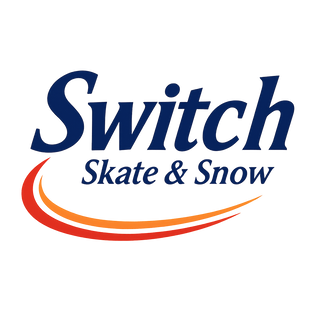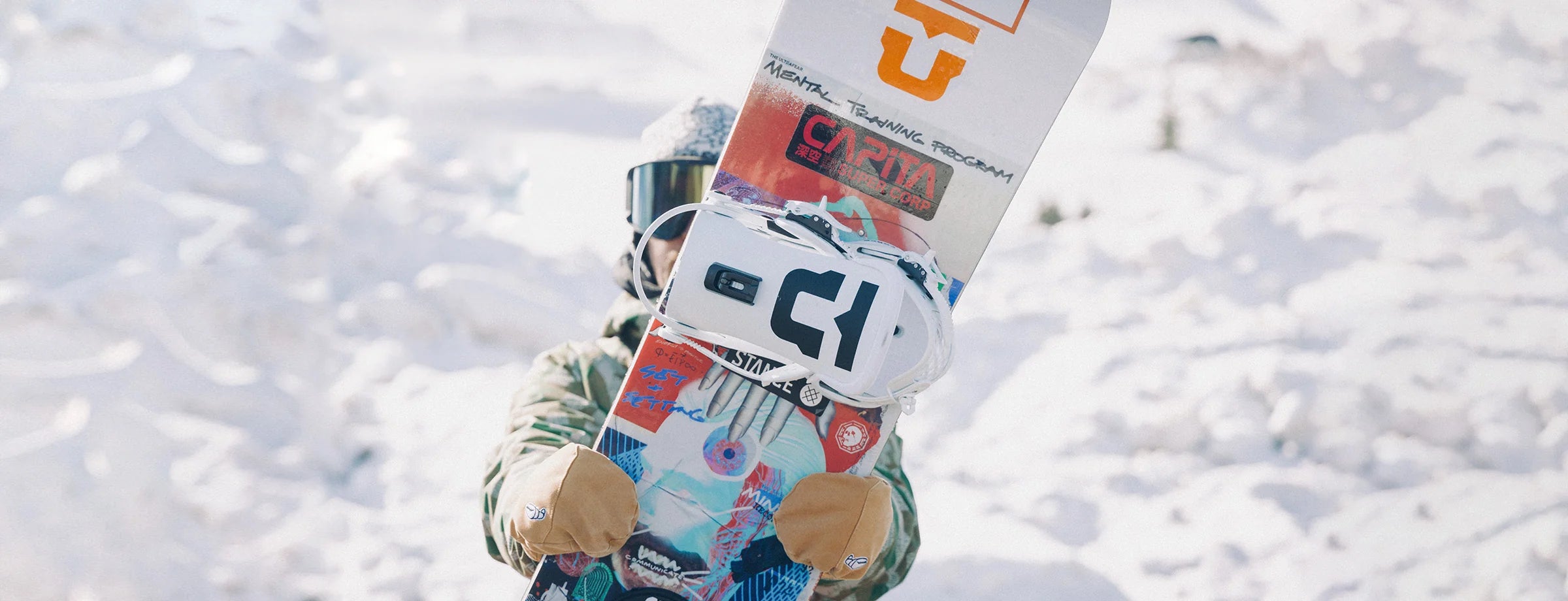If you’re looking for the ultimate guide to Toronto skateparks, you’ve come to the right place. As fellow board-lovers based in Ajax serving all of Canada via our shop at Switch Skate & Snow, we’ve rolled through the Greater Toronto Area seeking the best concrete, rails and bowls. Whether you’re hunting for a mellow spot for your first ollie or a full-on flow park for tricks, we’ve got you covered. We’ll list indoor, outdoor, free, and paid parks, break out top picks for beginners in each category, and dig into what makes each park special.
Fun fact: According to the City of Toronto, there are 15 outdoor skateparks and three indoor skateparks in Toronto.
(So yes, there’s enough options for your next session even during the winters.)
Follow us on Instagram to find exclusive deals.
Switch Skate & Snow:
161 HARWOOD AVE N UNIT #6, AJAX, ONTARIO, L1Z0A1
Indoor “Paid” Toronto Skateparks
These parks usually require admission or membership. Great when the weather’s rough or you want a controlled environment.
1. Skate Loft (763 Warden Ave, Toronto)

This facility is built by skaters, for skaters. According to their website they offer public skate hours, lessons, drop-in sessions.
Why we like it:
-
Indoor, so no weather worries.
-
Street & mini-ramp features make it beginner-friendly.
-
Tuition and sessions for kids and adults.
Top beginners’ tips: Bring a proper skate helmet (road-bike helmets often don’t cut it here), expect to pay ~ $15 drop-in. For beginners pick one of the less busy hours (weekday afternoons).
Beginner top-3 features: -
Mini-ramp area to build confidence.
-
Street-style ledges and rails sized smaller.
-
Lessons that guide you through your first tricks.
Important fact: Even indoor paid parks can fill up; book ahead or arrive early to secure your slot.
Note: Though in Toronto, but not free.
2. CJ’s Skatepark (560 Hensall Cir, Mississauga)

Just outside Toronto proper (in Mississauga), still within the GTA. This is a large indoor facility noted in review as “world’s largest not-for-profit indoor skateboard park” with ramps, foam pits, etc.
Why we like it:
-
Large scale: good if you’re more committed.
-
Great for all skill levels and for practice when outdoor parks are shut.
Beginner-friendly features: -
Flow zones where you can cruise without heavy traffic.
-
Mini-ramps and smaller transitions to build skill.
-
Staff in reviews mention friendly environment.
Important fact: Even though not strictly in Toronto city limits, for Toronto skateparks and the GTA this is an option (especially if it’s raining or snowing).
Tip: Check membership/waiver requirements ahead of arrival.
Outdoor “Free” Toronto Skateparks
These parks are free to use (typically) and open to the public — you just bring your board and safety gear.
3. Beach Skatepark (1420 Lake Shore Blvd E., Toronto)

This is among Toronto’s largest outdoor skateparks, located along the lake. The City lists it as featuring a plaza-style street area “with ledges, banks, stairs, rails, hubbas, gaps, and granite-capped ledges. The skatepark also has an 11-foot deep kidney bowl with pool coping.”
Why we like it:
-
Massive size and huge variety of features. Great for all levels.
-
Outdoors, by the lake: scenic, fresh air, big vibe.
Beginner-friendly top-3 features: -
The banks and flatter ledges near the entry area → gentle introduction to street-style tricks.
-
The deeper bowl is intimidating, so beginners stay clear until comfortable.
-
Nearby amenities (washrooms, beach access) make it easier for a full day out.
Important fact: Because it’s so popular, beginner riders can find it busy; best to arrive early to secure a spot and easier zones.
Tip: Bring your helmet (mandatory for safety) and perhaps pick a daytime slot when fewer advanced skaters are hogging the bowl.
4. Ellesmere Skatepark (20 Canadian Rd., Scarborough)

Described as the largest skatepark in Scarborough with a mix of terrain: street and transition. The City website mentions that it features a “mix of street and transition features” with ledges, banks, stairs, rails, hubbas and manual pads.
Why we like it:
-
Good size and variety make it less intimidating for beginners, yet interesting for intermediates.
-
Being in Scarborough means sometimes fewer crowds than downtown lakeside spots.
Beginner-friendly features: -
Street-zone area where you can practice ledges and small rails.
-
Banks and smaller transitions that help you build flow.
-
Plenty of run-in space so you can build speed gradually.
Important fact: While free, amenities may be more limited than premium parks (e.g., shade, seating).
Tip: If you’re new, stick to the perimeter ledges first before moving into the bowls or rails.
5. Neilson Park Skatepark (1555 Neilson Rd., Scarborough)

Neilson is a well-known community skatepark with a street-style layout including banks, quarters, ledges and rails. According to the Toronto skateboarding directory: “Some features include a beginner-level three-stair drop, an intermediate-level five-drop and an assortment of flat ground features.”
Why we like it:
-
Less intimidating for those just starting out compared to huge bowls.
-
Good community feel.
Beginner top-3 features: -
Flat ground ledges and manual pads let you dial balance and boards control.
-
Smaller stairs sets (3-step) let you try drop-in or small gaps safely.
-
Street rails sized moderate for progression.
Important fact: Neilson’s Phase 2 was planned for extra transition features, though might still be under development.
Tip: Go during off-peak times (weekdays after school) to avoid crowded sections.
6. Christie Pits Skatepark (Bloor & Christie, Toronto)

A more compact park that gets recommended for beginner or intermediate skaters in downtown. On Reddit one user writes:
“Your two best bets are Christie Pitts, Dufferin Grove …” - Reddit
Why we like it:
-
Compact size means you can see most terrain – less intimidating.
-
Street obstacles dominate: so good practice for ledges, rails, stairs.
Beginner-friendly features: -
Small quarter pipes/mini banks to build confidence.
-
Low ledges and short rails so you can try grinds with lower risk.
-
Located in a park environment – good for family rides.
Important fact: It’s seasonal and subject to weather or municipal maintenance. Always check before heading.
Tip: Beginners should use protective gear and try the smaller zones first before tackling any bigger drop-ins.
7. Jordon Carter Memorial Park (Jordon Carter) Skatepark (160 Eighth St., Toronto)

Also listed in the city resources as Eighth Street (10,000 sq ft neighbourhood skatepark) featuring bowl + street combo.
Why we like it:
-
Smaller scale means less traffic and more friendly to new skaters.
-
Mix of bowl and street elements gives versatility.
Beginner-friendly features: -
Shallow banks and gentle transitions to start.
-
Street‐plaza style ledges where you can practice simple tricks.
-
Less crazy crowd than major destination parks.
Important fact: Because it’s smaller, advanced skaters may have fewer big features, so if you grow you might move to a larger park.
Tip: Wear full protection (helmet, pads) for your first bowl drop-in attempts.
Outdoor “Paid” or Premium Parks
While many outdoor parks in Toronto are free, some are premium/paid or are large destination parks worth treating as semi-paid because of travel, gear, or crowd considerations.
8. Vanderhoof Skatepark (60 Research Rd. (Leaside/East York), Toronto)

Known as “the Hoof,” this park features a U-shaped bowl, deep end, and street-area. The directory notes: “The bowl and small street area provide a challenging terrain to all skill levels…”
Why we like it:
-
It offers serious terrain for intermediate to advanced, but beginners can still find space on the street side.
Beginner-friendly features: -
Manual pads and banks on the street section for trick practice.
-
Shallow ends of the bowl can be used for flow-learning if you have some confidence.
Important fact: Because of the bowl, beginners should approach carefully, watch other skaters, and maybe stay on the street side until comfortable.
Tip: Build your flow on the Street section, then gradually move toward transition features.
9. Cummer Skatepark (6000 Leslie St., Toronto)

Described as a concrete community skatepark with banks, ledges, rails, pyramid and small bowl.
Why we like it:
-
Good mix of street and bowl that accommodates beginners progressing into intermediate.
Beginner-friendly features: -
Banks and ledges are moderate size → good for first tricks.
-
Small bowl allows first exposure to curved terrain without super steep drops.
Important fact: Even though free, certain features may be weather impacted; check for surface quality.
Tip: Arrive early to pick your preferred zone and avoid collision with more advanced skaters.
10. Dufferin Grove Skatepark (875 Dufferin St., Toronto)

Smaller but community-oriented. The city list mentions: “Open spring to late summer only. Street obstacles, flat bars and quarters.”
Why we like it:
-
Perfect for beginners who want to learn street skating in a lower-intensity setting.
-
Located in a nice park, making it a pleasant outing.
Beginner-friendly features: -
Flat bars and small quarters let you master balance and movement before bigger stuff.
-
Minimal bowls → good if you’re not into transitions yet.
Important fact: It is seasonal and may not be open year-round. Check the calendar.
Tip: Bring your protective gear and treat it like your “local” practice spot.
Gear Tip for Every Toronto Skatepark
Since we run Switch Skate & Snow and we talk to riders every day, here’s a pro tip: always wear a quality helmet. For example, when you’re starting out at any of these Toronto skateparks, consider a helmet built for skateboarding—unlike a bike helmet, it offers better coverage for multiple impacts. Check our helmet page here on our site (link internal). A good helmet protects your head and allows you to push your boundaries with more confidence. The risk of a fall is real, even at the “beginner-friendly” parks.
How to Pick the Right Park for You
We think of choosing a skatepark like picking a coffee blend: some want full bold roast (big bowl, advanced flow), others want a light smooth blend (flat street work, mellow vibe). Here’s a mini checklist:
-
Skill level: If you’re new, go for parks with smaller ledges, less steep bowls (Neilson, Dufferin Grove).
-
Weather & time: Outdoor free parks rock on sunny days; indoor paid parks (Skate Loft) are perfect when rain or snow hits.
-
Crowd/traffic: Big destination parks (Beach Skatepark) draw more skaters — beginners might get overwhelmed.
-
Location relative to us (Durham Region/Ajax): Some parks are a drive; factor travel into your session time.
-
Safety gear: Regardless of park, wear helmet and pads, check your board.
-
Traffic pattern: At busy parks make note of run-in lines, flow direction, zones for beginners.
Conclusion
We’ve rolled through the top 10 spots across the city to help you navigate the massive scene of Toronto skateparks — free, paid, indoor and outdoor. From mellow street zones to full bowls, there’s somewhere for each stage in your ride. Pick a park that fits your vibe, wear your gear, and remember: skating is about fun, flow and progression — not just tricks. See you on the concrete waves.
FAQs - Toronto Skateparks
1. Are helmets required at Toronto skateparks?
Yes — while policy varies by park, most organized indoor parks require a skate-specific helmet. Outdoor parks strongly recommend it for safety.
2. Are all Toronto skateparks free?
No — many outdoor parks are free, but the indoor/paid ones charge admission or membership (e.g., Skate Loft).
3. Can beginners go to big bowls right away?
It’s best to build skill on street ledges or smaller banks first before tackling deep bowls like the one at Beach Skatepark with its 11-foot deep end.
4. What time of day is best to visit?
Early morning or weekday afternoons tend to be less crowded, especially at popular outdoor parks.
5. Do I need to bring my own board or gear?
Yes — bring your board, helmet, and pads. Some indoor parks offer rentals, but outdoor parks operate on you bringing your gear.


